Cross-country skiing is one of the easiest winter sports to learn, perfect for beginners of all ages. It’s safe, low-impact, and affordable - no need for pricey lift tickets or specialized gear. With compact skis like Snowfeet NORDIC Cross-country Skate Skis, you can start skiing in your backyard, local parks, or groomed trails. These shorter skis (just 90 cm) are lightweight, easy to handle, and work with regular winter boots - making them beginner-friendly and budget-conscious.
Here’s a quick summary of what you need to get started:
- Gear: Short skis, poles, warm layers, gloves, and a hat.
- Techniques: Learn to glide, skate, turn, and stop with simple movements.
- Best Spots: Local parks, golf courses, or Nordic centers with flat terrain.
- Safety: Check weather, dress in layers, and ski with a buddy.
With a little practice, you’ll be gliding confidently in no time. Snowfeet skis make it easy to enjoy winter without the hassle of bulky equipment or expensive trips. Let’s dive in!
Classic Cross-Country Skiing for Beginners: Everything You Need to Know to Get Started || REI
Cross-Country Skiing Gear You Need
Starting cross-country skiing? The right gear can make all the difference. The best part? It’s not as gear-heavy (or pricey) as downhill skiing or snowboarding. You can get started without blowing your budget.
Essential Gear Checklist
- Skis: The Snowfeet* NORDIC Cross-country Skate Skis (90 cm/3 feet) are a great beginner-friendly option. They’re much shorter than the traditional 6-7 foot skis, making them easier to handle.
- Boots/Bindings: No need for expensive, specialized boots! These skis work with your regular winter footwear, saving you serious cash.
- Poles: Look for lightweight aluminum or carbon fiber poles. They should reach about chest height when you’re standing upright.
- Clothing: Stick to a three-layer system - a moisture-wicking base layer, an insulating middle layer, and a windproof outer shell. Avoid cotton because it traps moisture and chills you fast.
- Accessories: Don’t forget gloves, a warm hat, and sunglasses or goggles to protect your eyes from snow glare.
Now, let’s dive into why Snowfeet* skis are a fantastic choice for beginners.
Why Snowfeet* NORDIC Cross-country Skate Skis Are Great for Beginners
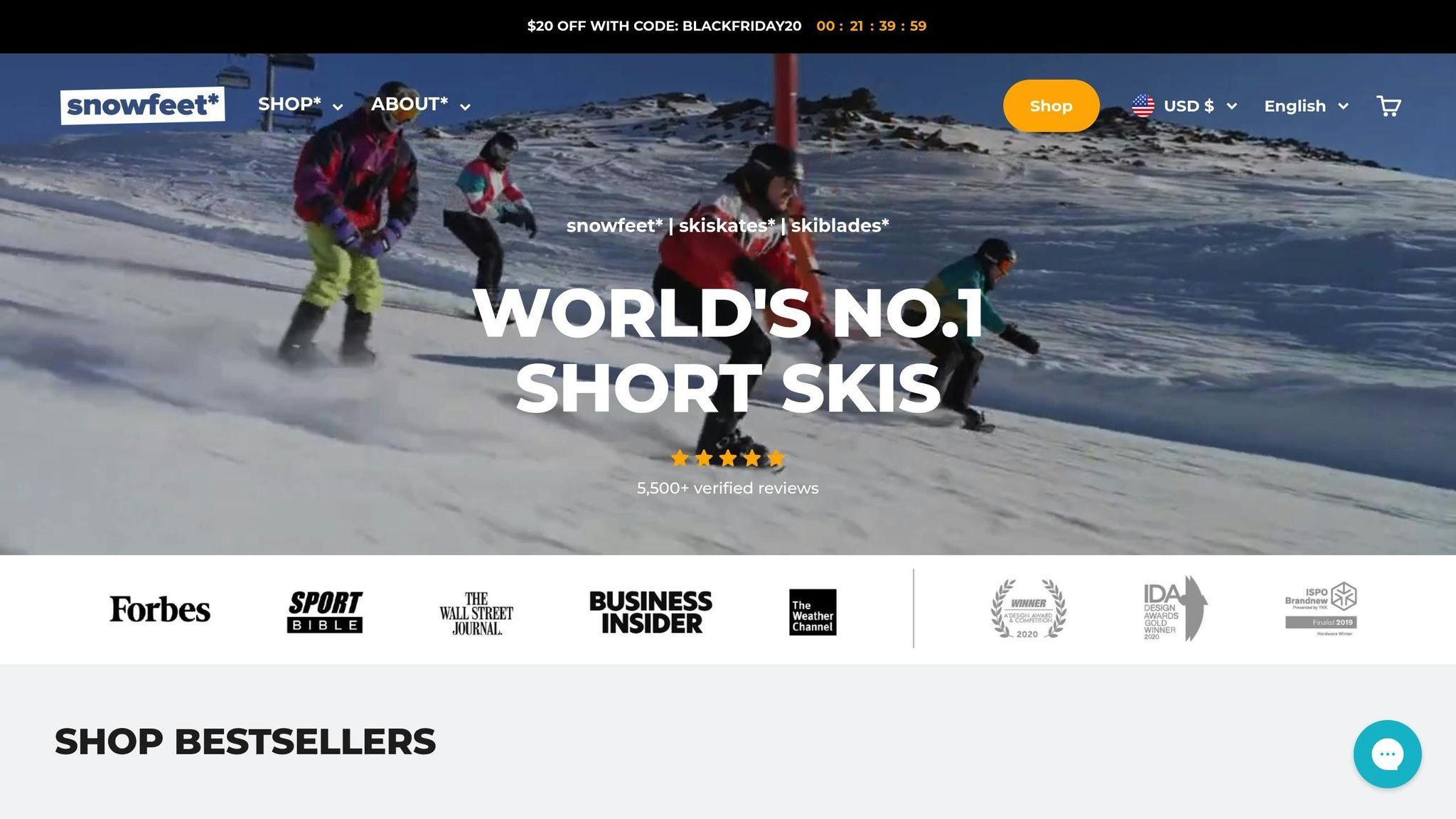
Traditional cross-country skis can feel, well, overwhelming. They’re long, a bit clunky, and often require specialized gear. Snowfeet* NORDIC skis flip the script with their compact 90 cm length. Here’s why they shine:
- Easier to Handle: Their shorter size means less hassle. You won’t spend your day untangling skis or worrying about awkward falls. Plus, they’re light enough to toss in a backpack.
- No Fancy Boots Needed: Forget dropping $150–300 on special ski boots. Snowfeet* skis work with your regular winter boots, so you can hit the snow without extra prep or cost.
- Faster Learning Curve: Shorter skis make it easier to find your balance and rhythm. Many beginners feel confident gliding and turning within an hour, compared to multiple sessions with traditional skis.
- Super Portable: Unlike traditional skis, which need roof racks or carriers, these fit in your car trunk or a closet. That means spontaneous ski adventures are totally doable.
Snowfeet* vs Traditional Cross-Country Skis and Snowboards
Here’s a quick side-by-side comparison to show how Snowfeet* stacks up against traditional cross-country skis and snowboards:
| Feature | Snowfeet* NORDIC | Traditional Cross-Country Skis | Snowboards |
|---|---|---|---|
| Learning Curve | Easy - most people ski within an hour | Moderate - takes several sessions | Challenging - steep learning curve |
| Length | 90 cm (3 feet) | 180–210 cm (6–7 feet) | 140–165 cm (4.5–5.5 feet) |
| Weight | Lightweight, backpack-friendly | Heavy, needs roof rack | Heavy, bulky to carry |
| Footwear | Regular winter boots | Specialized boots ($150–300) | Snowboard boots ($200–400) |
| Storage | Fits in a closet | Needs garage or basement space | Moderate storage required |
| Cost | $250–275 | $400–800+ | $500–1,000+ |
| Terrain | Groomed trails, backyards, parks | Mostly groomed trails | Ski resorts with lifts |
| Portability | Excellent - car trunk friendly | Poor - requires special transport | Fair - fits in most vehicles |
Snowboards are another story. They’re pricier, harder to transport, and you’re limited to ski resorts. Snowfeet* skis, on the other hand, open up a world of possibilities - from groomed trails to your backyard after a fresh snowstorm. That’s winter fun made simple!
Basic Cross-Country Skiing Techniques
Got your Snowfeet* skis ready? Great! Let’s dive into the basics - it’s easier than you think. With a few key techniques, you’ll reduce frustration and start gliding like a pro in no time.
2 Main Cross-Country Skiing Styles
Cross-country skiing comes in two main flavors: classic skiing and skate skiing.
Classic skiing is the traditional style. Picture yourself gliding forward in a straight line, skis moving parallel within groomed tracks. It’s a bit like walking, but with a smooth, flowing motion.
Then there’s skate skiing, which is where Snowfeet* NORDIC skis really shine. This style is more dynamic - it’s like ice skating. You push off at an angle, creating a V-shape with your skis, similar to the movements you’d make on ice skates or rollerblades.
Snowfeet* NORDIC Cross-country Skate Skis are 90 cm (about 35 inches) long, making them perfect for beginners. Traditional skate skis are longer and can feel unwieldy when you’re learning that angled push-off. The compact, lightweight design of Snowfeet* skis lets you focus on nailing the technique without wrestling with oversized gear. If you’ve ever ice skated, you’ll find this motion familiar, which can speed up your learning curve.
Basic Movements for Beginners
Start with gliding - this is the heart of cross-country skiing. Push off with one foot while keeping the other ski flat on the snow to propel yourself forward. Snowfeet* skis make this feel natural and intuitive, helping you glide, turn, and stop with ease.
Next, try the skating motion. Here’s how: plant your pole, push one ski out at a 45-degree angle, and shift your weight as you glide forward. Then repeat on the other side. Thanks to the manageable size of Snowfeet* skis, this movement feels less intimidating and more controlled.
When it’s time to stop, use the classic snowplow technique. Point your ski tips together to form a wedge, keep your heels apart, and press the inner edges into the snow. This slows you down effectively, and Snowfeet* skis respond quickly, giving you control as you come to a stop.
Turning is all about weight transfer. Shift your weight to the outside ski while gliding, and you’ll naturally curve in that direction. The responsive design of Snowfeet* skis helps you make smooth, controlled turns as you gain confidence.
How to Improve Your Skills Quickly
Want to level up fast? Here are some tips to help you build confidence and refine your technique:
- Start on gentle terrain. Flat or slightly sloped areas are perfect for practicing basic movements without feeling overwhelmed.
- Take a lesson. A session with an instructor can set you up with good habits right from the start. Many cross-country ski centers offer affordable group lessons, and instructors can tailor their advice to suit the unique feel of Snowfeet* skis.
- Ski with experienced friends. Watching seasoned skiers can teach you a lot about weight transfer, pole planting, and maintaining a steady rhythm.
- Focus on rhythm, not speed. A smooth, steady motion is more important than going fast. Snowfeet* skis provide great stability, so you can relax and concentrate on your technique instead of worrying about balance.
Most beginners notice progress after just a few sessions, thanks to the forgiving and user-friendly design of Snowfeet* skis. Before you know it, you’ll be gliding with confidence!
sbb-itb-17ade95
Picking Safe Places to Ski
Now that you’ve nailed down your technique, it’s time to pick the perfect spot to ski. The right location can make all the difference between a frustrating outing and discovering a love for cross-country skiing.
Best Places for Beginners to Start
If you’re just starting out, local Nordic centers and ski resorts are fantastic options. These places often have groomed trails designed with beginners in mind. You’ll find well-maintained tracks, clear signage, rental shops, and even instructors to help you get started. Groomed trails offer a predictable surface, which is perfect for getting the hang of your Snowfeet* skis without worrying about tricky snow conditions.
Another great option? Local parks or golf courses. Many parks turn into snowy playgrounds in the winter, and some golf courses open their wide, rolling terrain for skiing. These gentle slopes are ideal for practicing your skating techniques. Snowfeet* skis are especially handy here since their compact design works well on varied terrain, even in spots where traditional skis might struggle.
You can also explore residential areas and fields if your area gets light to moderate snowfall. Snowfeet* skis perform great on packed snow found in parks or quiet streets, giving you the freedom to ski where traditional skis might not work as well.
Lastly, consider state and national parks. Many have winter trail systems with beginner-friendly loops. Not only do these trails come with beautiful scenery and clear markings, but they also tend to have established safety measures in place. It’s a great way to enjoy nature while staying on the safe side.
Staying Safe While Cross-Country Skiing
Safety is key when heading out for a skiing adventure. Start by checking the weather and trail conditions. Winter weather can be unpredictable - what looks perfect in the morning might turn risky by the afternoon. Many Nordic centers and parks post daily updates online, so check for temperature changes, recent snowfall, and any warnings before you go.
When it comes to what to wear, layer up. Start with a moisture-wicking base layer, add an insulating middle layer, and finish with a windproof outer shell. Don’t forget extra gloves, a hat, and hand warmers - better to have them and not need them than the other way around.
Stay fueled and hydrated. Cold weather can make it easy to forget you’re thirsty, so bring an insulated water bottle and pack snacks like nuts, energy bars, or dried fruit for quick energy boosts.
Follow trail etiquette to keep things smooth for everyone. Stick to marked paths, and remember that uphill skiers usually have the right of way. If you’re passing someone, give them a heads-up. Snowfeet* skis are super maneuverable, which makes it easier to handle these situations.
Whenever you can, ski with a buddy. It’s more fun and much safer. If you’re heading out solo, let someone know your route and when you plan to return. And always carry the essentials: a first-aid kit, a charged cell phone, and maybe even a multi-tool for quick equipment fixes.
Picking the right spot and preparing properly can make your skiing adventure both safe and fun. With these tips, you’re all set to enjoy your Snowfeet* skis to the fullest.
Taking Care of Your Snowfeet* Skis
Keeping your Snowfeet* skis in good shape is surprisingly simple and ensures they stay ready for action whenever you are.
Easy Maintenance Tips
After a day on the slopes, take a moment to dry the metal edges to prevent rust from forming. Cleaning the base with a wax remover helps get rid of dirt and grime, while applying a liquid glide wax over the fish-scaled base improves glide and adds a protective layer. Although Snowfeet* skis come with a "Fishscales" base that doesn’t require traditional kick wax, adding liquid glide wax can still boost their performance.
"To optimize glide and extend the life of your fish scaled skis, we recommend that you clean the base with wax remover to remove contaminants, then wax the entire base (even the fish scaled part) to nourish it and optimize glide or prevent snow from sticking." - SWIX
To keep the base in top condition, use a brass brush to remove oxidation. Unlike traditional waxable skis, where brushing is limited to specific zones, Snowfeet* skis should be brushed from tip to tail for consistent performance.
One of the best things about Snowfeet* skis is how low-maintenance they are. You won’t need to deal with temperature-specific waxes, complicated application techniques, or a bunch of specialized tools.
Once cleaned and waxed, storing them properly is essential to keep them ready for your next adventure.
Storing Your Skis During the Off-Season
Proper storage during the off-season helps preserve your skis' performance. Before putting them away, loosen the binding tension slightly.
For added protection, use ski straps or padded bags, and if you’re storing them in a shared space, a hard-sided case is a smart choice. If you live in a warm or humid area, consider renting a small climate-controlled storage unit to avoid heat and moisture damage. Ideally, keep your skis in a dry, cool place, away from direct sunlight and extreme temperature swings. Basements, closets, or garages that stay relatively cool and dry usually work well. It’s also a good idea to check on your skis occasionally to make sure they’re still in great shape.
Snowfeet* Accessories for Hassle-Free Care
Snowfeet* offers accessories to make ski maintenance even easier. Their liquid wax is simple to apply and keeps your skis gliding smoothly. They also provide extra straps for a snug fit with snowboard boots or as replacements for larger boots.
For edge maintenance, the Snowfeet* sharpening stone is a handy tool to keep your skis performing at their peak. These accessories make it easy to keep your gear in top condition without much effort.
Start Cross-Country Skiing with Confidence
Cross-country skiing is a fantastic way to stay active while soaking in the magic of winter. Unlike downhill skiing - which often comes with pricey lift tickets and crowded slopes - this sport lets you explore trails, parks, or even your own backyard at your own pace, all without breaking the bank.
Snowfeet* NORDIC Cross-country Skate Skis make it easier than ever for beginners to dive into this winter activity. At just 35 inches (90 cm) long, these compact skis are designed for spontaneous adventures. Even better, you can use them with your regular winter boots thanks to their adjustable bindings - no need to invest in specialized cross-country ski boots.
Their short length makes it easy for most beginners to get the hang of gliding within an hour. Suddenly, winter workouts feel less like a chore and more like play. Plus, their design prioritizes safety and ease of use, which is exactly what you'd expect from Snowfeet* products.
Once you’ve got the basics down, it’s time to put those skills to the test. Don’t worry if you feel a little wobbly at first - that’s part of the fun! Start on flat, groomed trails or even a snow-covered field nearby. Focus on mastering the smooth gliding motion before you try tackling hills. Many beginners find that local parks or snow-covered golf courses are perfect practice spots.
One of the best things about Snowfeet* skis is their versatility. You’re not tied to official cross-country trails. Whether it’s a hiking path, your backyard, or any snowy open space, these skis adapt to your surroundings. This flexibility is a game-changer for busy families and outdoor enthusiasts who want to enjoy winter without the hassle of expensive resorts or extra gear.
With a little care, your Snowfeet* skis will last for years of snowy adventures. Their maintenance is refreshingly simple, so you’ll spend more time gliding through the snow and less time fussing with complicated waxing routines.
Whether you’re looking for a fun way to stay active this winter or want to explore snow-covered landscapes, cross-country skiing with Snowfeet* is a great place to start. These skis not only make the sport accessible but also spark a love for winter that’ll keep you coming back year after year.
FAQs
Why are Snowfeet NORDIC Cross-country Skate Skis a great choice for beginners compared to traditional cross-country skis?
Snowfeet NORDIC Cross-country Skate Skis are a great pick for beginners, and here’s why. First off, their shorter length makes them much easier to handle compared to traditional cross-country skis. This means better control and less frustration when you're just starting out. Plus, you don’t need any special boots - so you save some cash and skip the hassle of extra gear.
Another big win? These skis are super lightweight and easy to carry around. Whether you’re heading to the trails or storing them at home, they won’t weigh you down. And because they’re designed with simplicity in mind, you’ll pick up the basics faster and spend more time having fun in the snow. If you’re new to cross-country skiing and want something versatile and beginner-friendly, Snowfeet NORDIC Skate Skis are worth checking out.
What’s the best way for beginners to quickly improve their cross-country skiing skills?
To get better quickly as a beginner, start with the basics by learning from a professional instructor or an experienced skier. Focus on essential techniques like keeping your balance, smoothly shifting your weight, and coordinating your arm and leg movements. Practicing regularly on groomed trails or flat, snow-covered areas will help you gain confidence over time.
If you're looking for beginner-friendly gear, check out the Snowfeet NORDIC Cross-country Skate Skis (90 cm). These skis are shorter and lightweight, making them easier to control compared to traditional skis. This can make it simpler to nail the fundamentals as you get started. Stick to easy, safe terrain, and don’t forget to take breaks - progress takes time, so be patient and enjoy the process!
What safety tips should I follow while cross-country skiing in parks or on golf courses?
When you're cross-country skiing in parks or on golf courses, it's important to check the trail conditions ahead of time. Look out for any posted signs or warnings - they’re there to keep everyone safe. Stick to the marked skiing direction, and try not to stop in spots where you might block the trail or be hard for others to see.
Pay attention to your surroundings, especially if you're on multi-use trails. Be courteous - yield to pedestrians or other skiers when needed. And don’t forget about visibility! Wearing reflective clothing is a smart move, especially if the light is dim. A little extra caution goes a long way in making your skiing adventure both safe and fun.








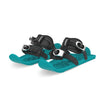

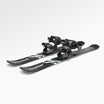



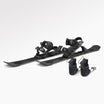







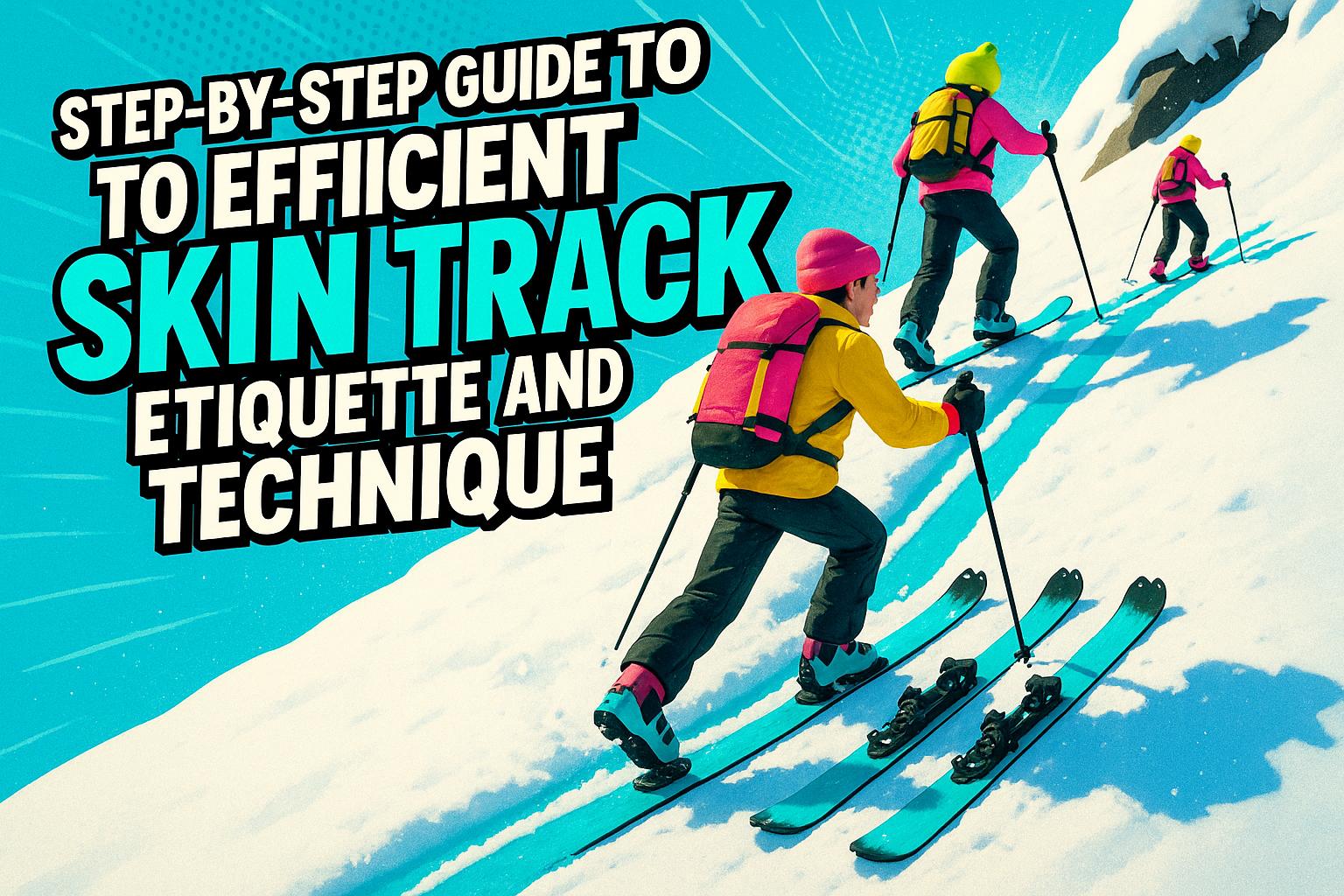
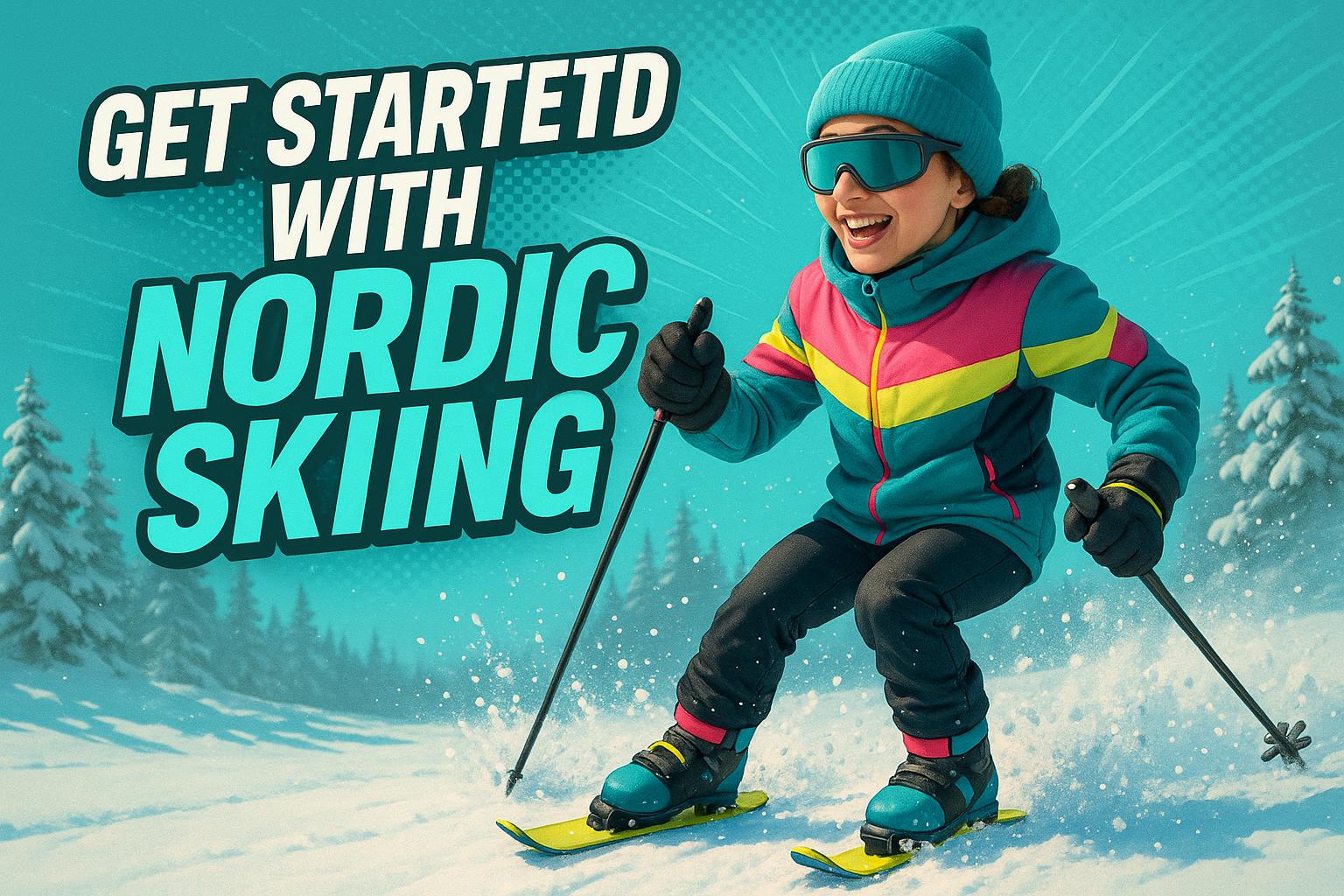

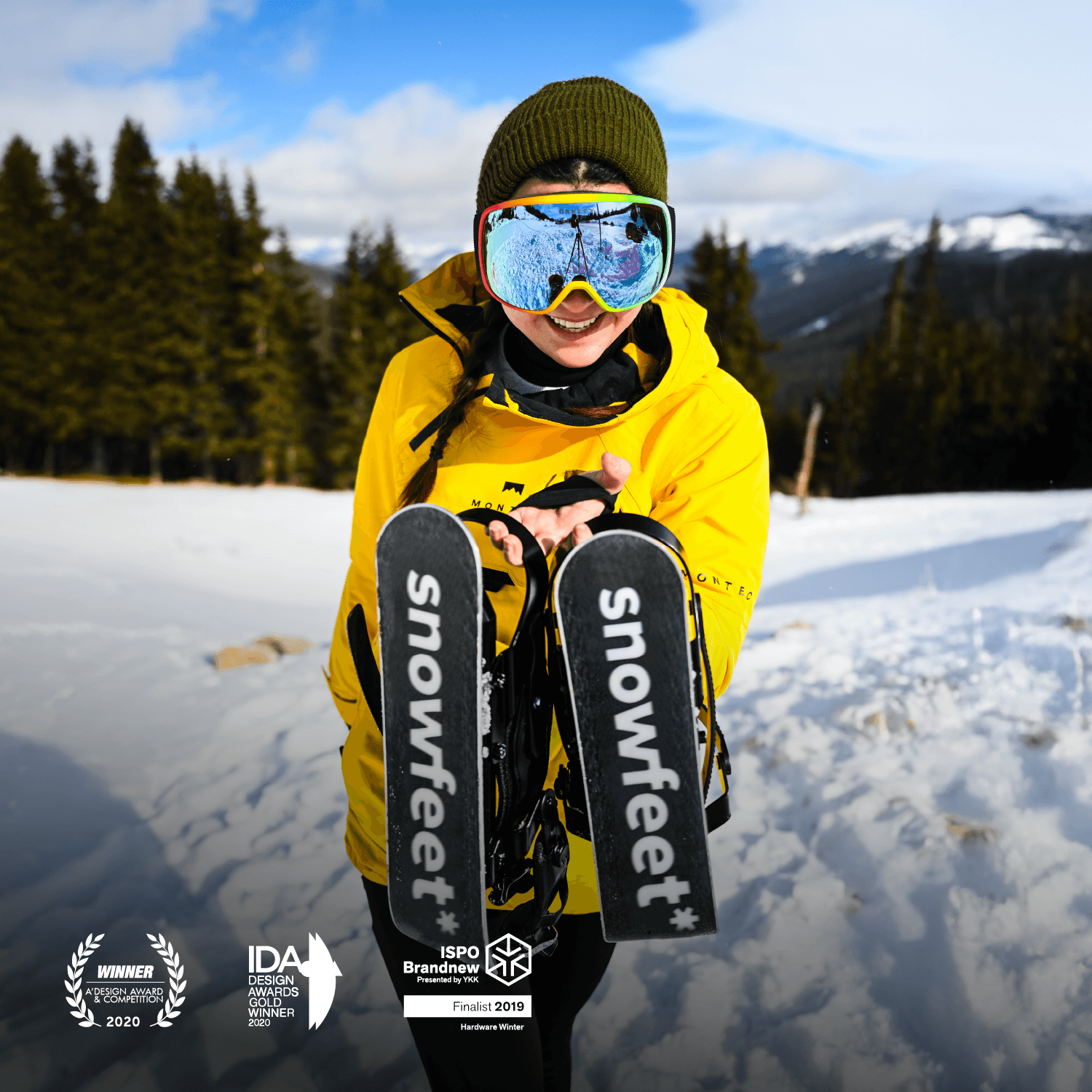

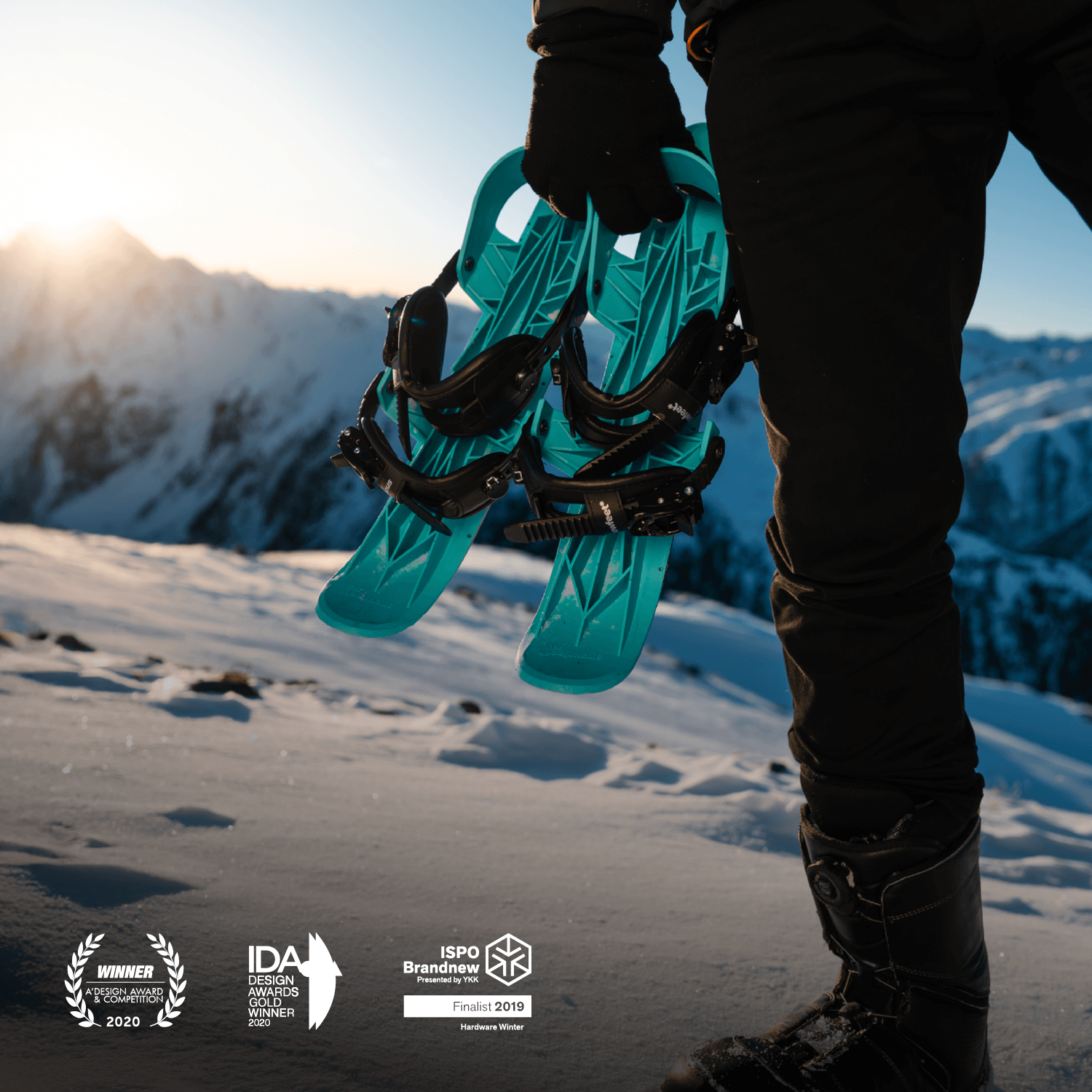
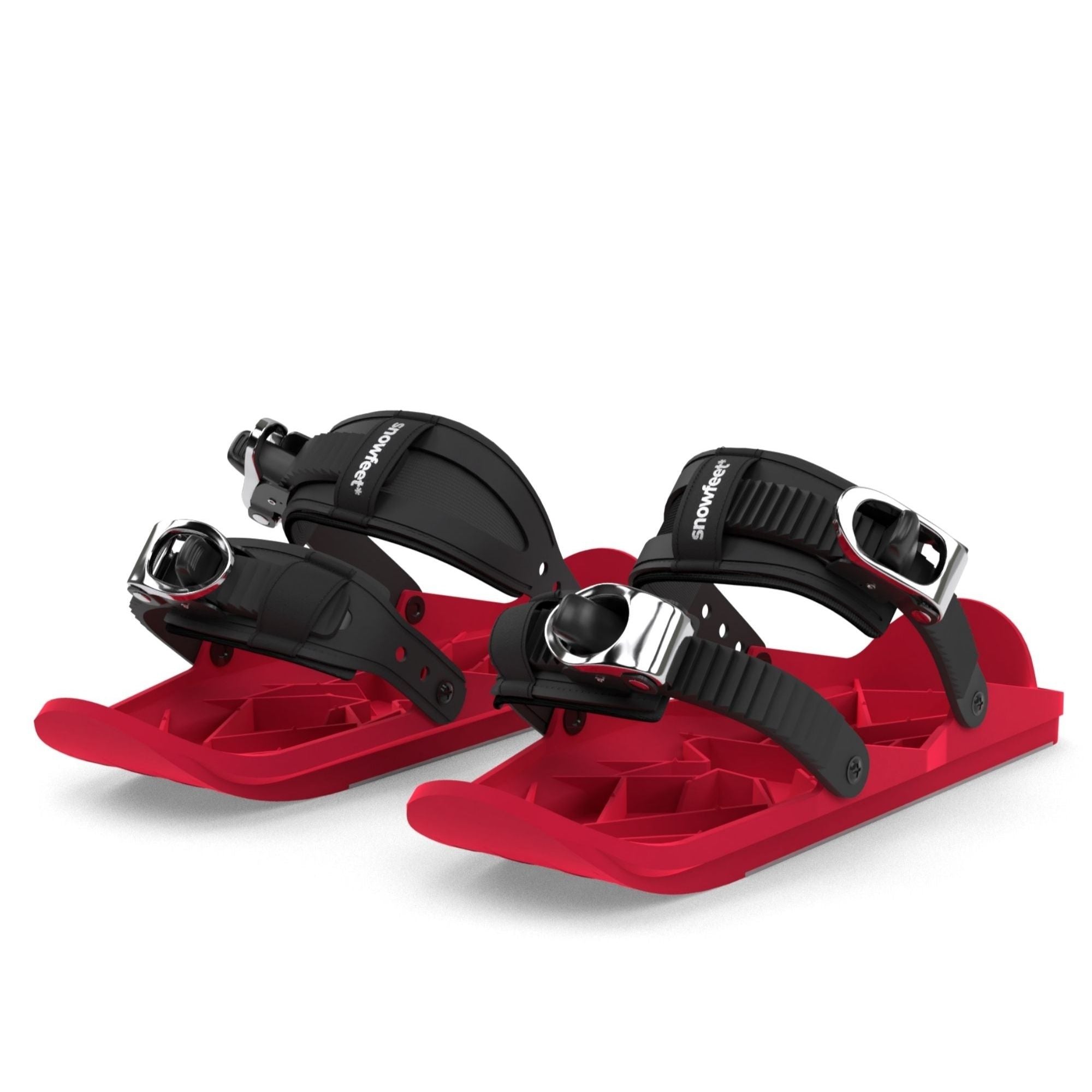



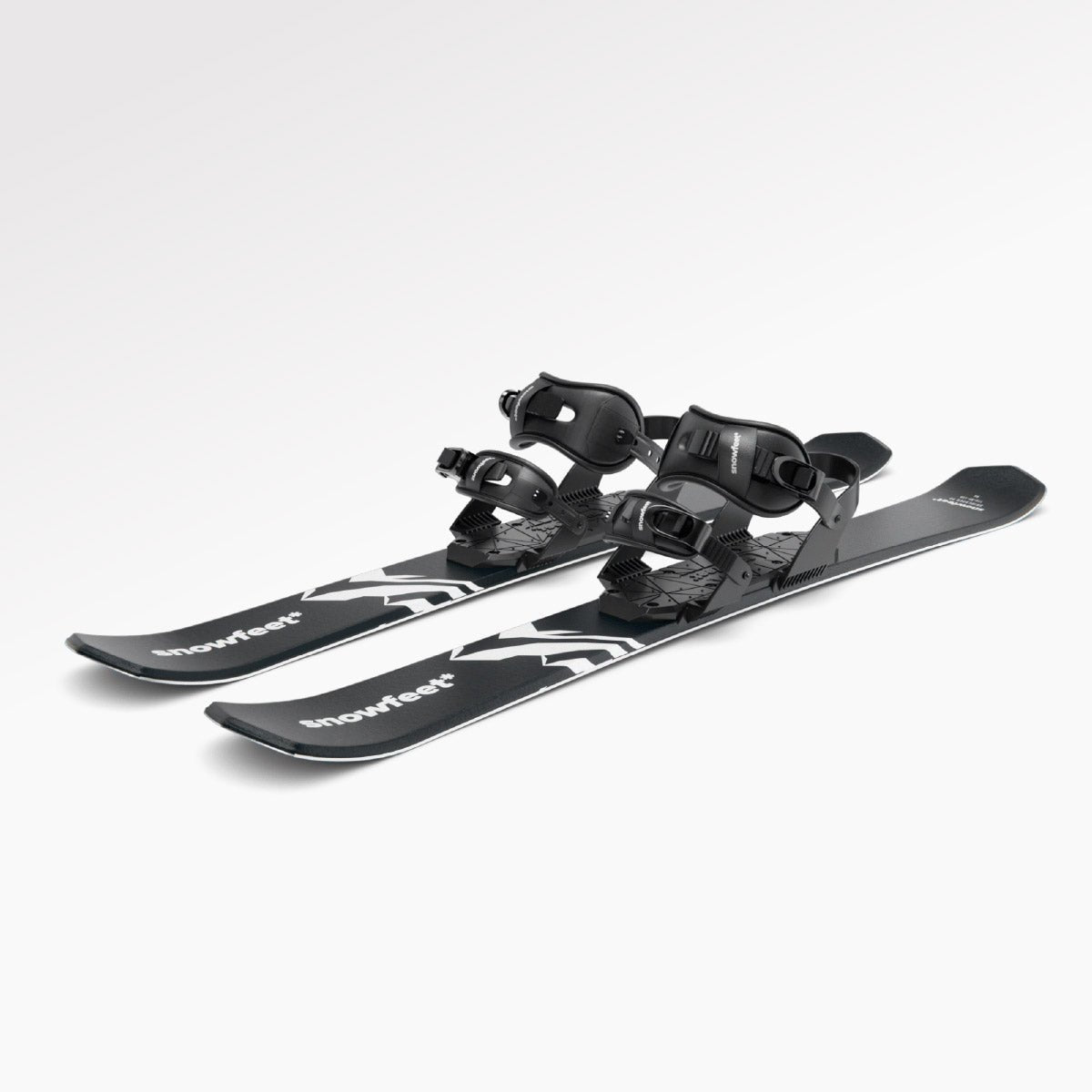
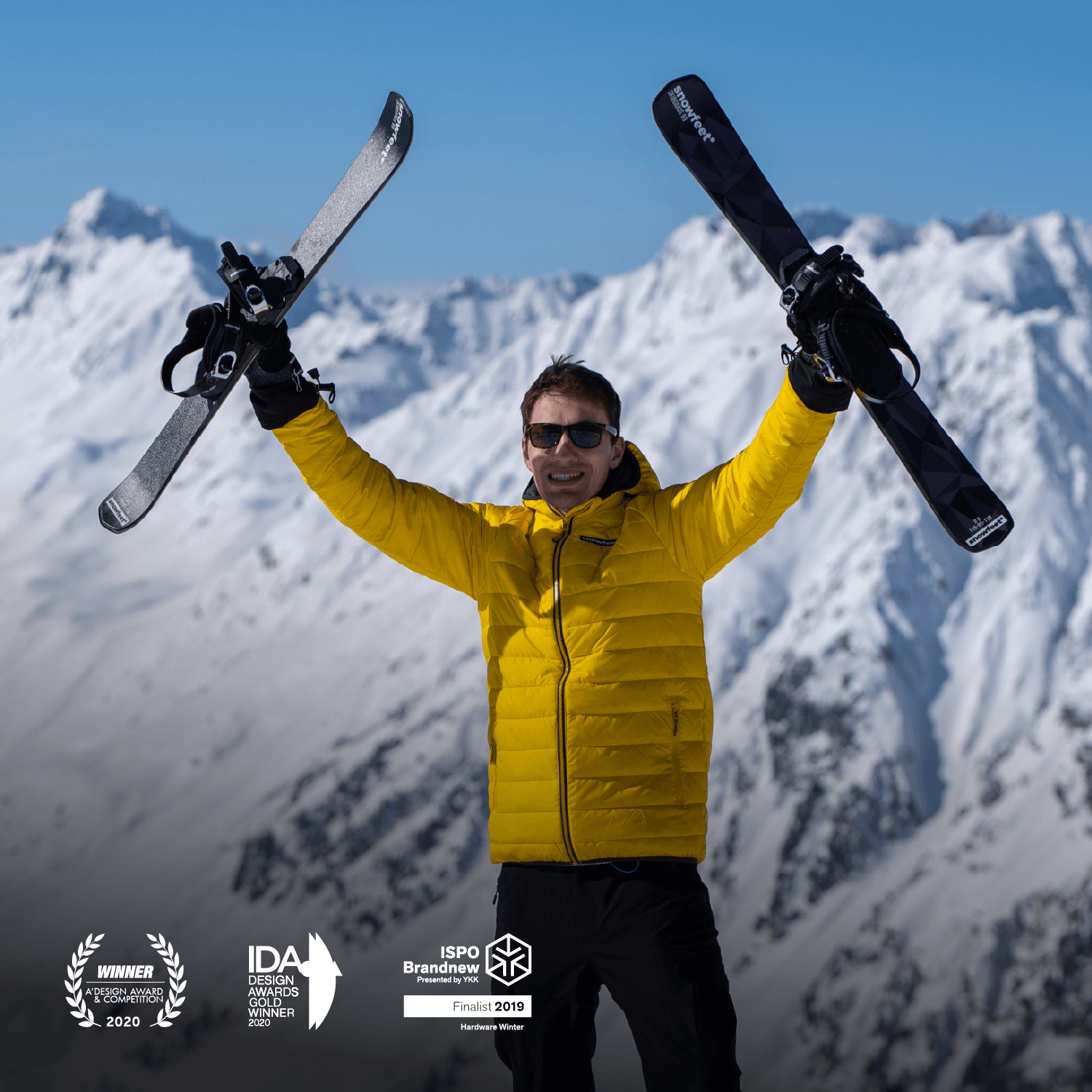
Leave a comment
This site is protected by hCaptcha and the hCaptcha Privacy Policy and Terms of Service apply.